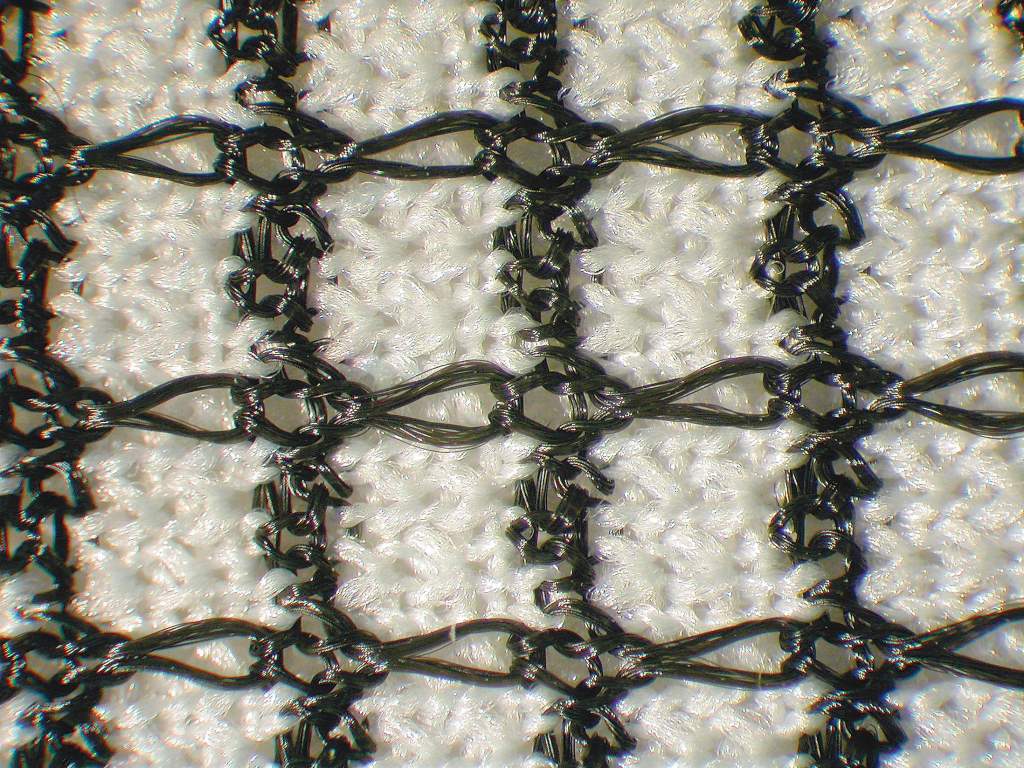Putting the HECS on
Published 4:00 am Sunday, February 27, 2011

- The HECS fabric is made up of tightly woven conductive carbon fiber, seen above.
John Day resident Mike Slinkard, who has been in the outdoor-gear business for two decades, is proud to report that more and more hunters are convinced his newest product isn’t just a gimmick.
Slinkard, who for years spent his free time running an archery shop out of his garage when he was not working at a sawmill, already has won international recognition for his bowstrings and bow buss cables, sold through his company Winner’s Choice Custom Bowstrings.
For a year now, Slinkard has been selling and marketing the Human Energy Concealment Systems, or HECS, a hunting suit he and a colleague invented that cancels out the user’s electromagnetic energy, which in turn keeps animals from sensing him or her. The suit includes pants, a shirt and a head net.
At first, Slinkard said, there was suspicion of the thing among bowhunters. But one by one, the skeptics are taking the suit for a spin, and finding themselves intrigued.
“Bow hunting is difficult as it is, and if we can get something that gives us just a little bit more advantage … then I’m all in favor of it,” said Tory Allman, manager of Cent-Wise Sporting Goods in Redmond and owner of a HECS suit.
Slinkard is delighted to see the feedback improving, as people learn more about the science he said shows the validity of the product.
What’s more, he’s eager to take the technology — on which there are already five patents pending, he said — into new territories. He and others have been exploring aquatic, military and even postal uses of the fabric, which could allow Slinkard to enter new markets. The bowstrings company has 38 employees and the HECS company has three. Slinkard said the latter can expand its work force and perhaps establish a manufacturing component as demand grows.
In the meantime, he said, hunters are getting closer to animals in the current HECS suits, which retail for $149.
The HECS origin traces back to a conversation Slinkard was having about four years ago with an employee, Max Maupin, about why certain animals apparently can feel the presence of a nearby hunter. Once animals come within about 40 or 50 yards of the hunter, Slinkard said, they will behave differently, feeding less and looking around more.
“We’ve all seen that, hunters, honestly for quite a long time,” he said. “There’s got to be something there. There’s got to be science.”
The two set off to find an explanation and a solution. They came up with the idea of stopping the electromagnetic energy, had a New Zealand company come up with fabric prototypes, found a factory in Taiwan to mass-produce the stuff and chose a factory in China for the stitching work.
The HECS was unveiled in January 2010.
The fabric that makes the HECS work is a tightly woven grid of conductive carbon fiber. In a way, Slinkard said, the fabric resembles the grid on the window of a microwave, which stops wider waves of radiation from emitting outward and impacting a person standing in front of the appliance.
Similarly, if a hunter’s heartbeat quickens or muscles tense up, the nearby electrical environment can change, and an animal can notice and perhaps run off. This is what hunters call an animal’s sixth sense. A HECS suit interrupts the electromagnetic current and keeps it bottled up, allowing for a better shot.
While a bowhunter can use the technology for purposes of offense, a diver could use a wetsuit made of HECS fabric as a defensive tool, with the ability to perhaps get closer to sharks and other creatures without being detected. That sort of wetsuit is not yet available on the market, but it could be one day, Slinkard said.
HECS hunting suits, however, are available in stores, with more and more people coming in to inquire about it, Cent-Wise’s Allman said.
Some customers have expressed suspicion of the technology, but he believes it works, because of personal experience.
Allman said he was wearing a HECS suit when he came across a black bear in a canyon in the Cascades last September, and something strange happened.
“This thing came angling up out a creek bed about 65 yards from me, and he just stopped, and he’s looking at me … for a fairly lengthy period of time — 15, 20 seconds,” Allman said. “Instead of bolting like they normally do, he took a few more steps.” The bear stared at Allman again. Then Allman walked a little closer. The bear, Allman said, approached him four times before wandering off. Wow, he thought — “this HECS thing is blocking my normal human signature, my electromagnetic energy.”
Not that Allman tried to shoot an arrow at the bear. He was hunting for elk that day. But he was nonetheless impressed.
Gary Lewis, who writes The Bulletin’s hunting and fishing column, has been intrigued by the idea behind the HECS suit since hearing about it a year ago, but he has not yet had a chance to try one out, to see what effect it has.
“I think I would be foolish to say that there’s nothing to it,” Lewis said.
Watch the HECS in action
Videos of bow hunters wearing the HECS are online at www.hecsllc.com.






